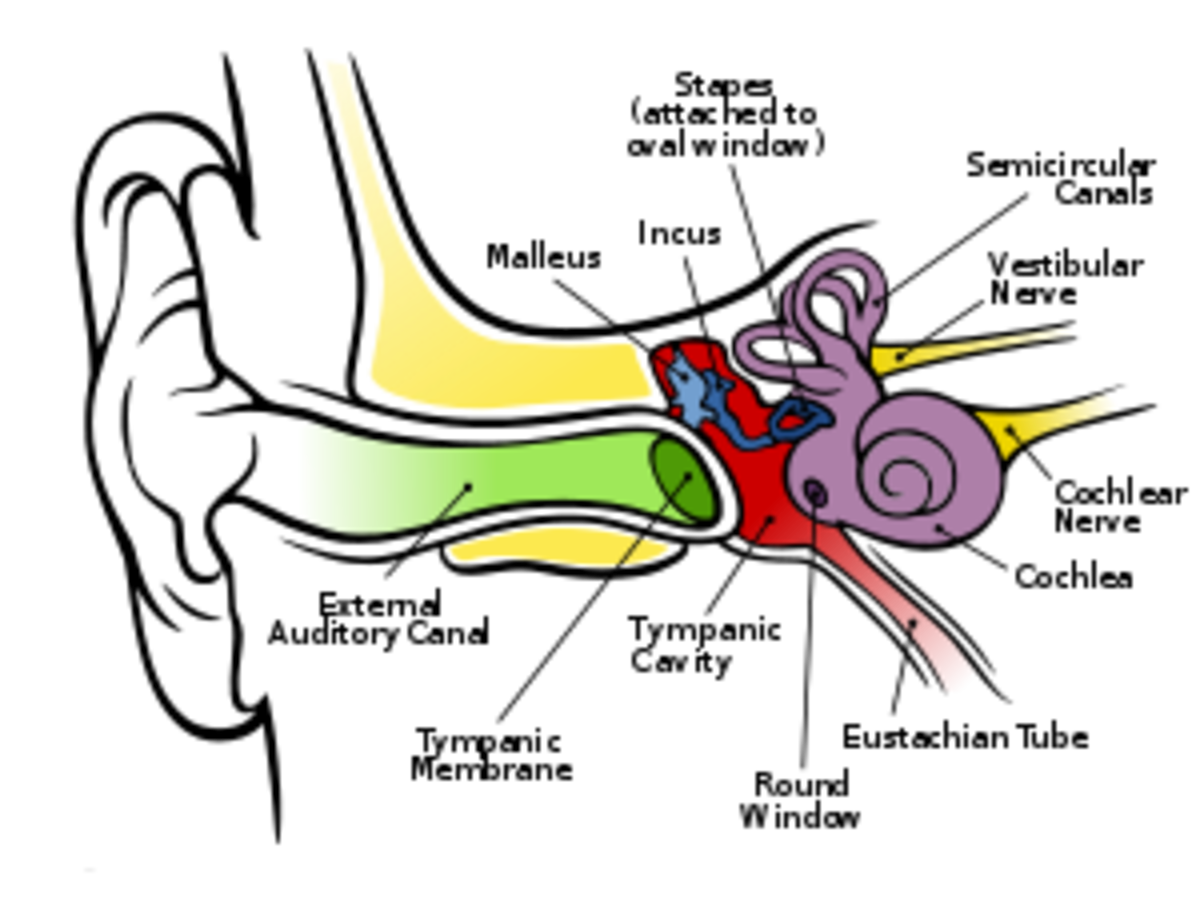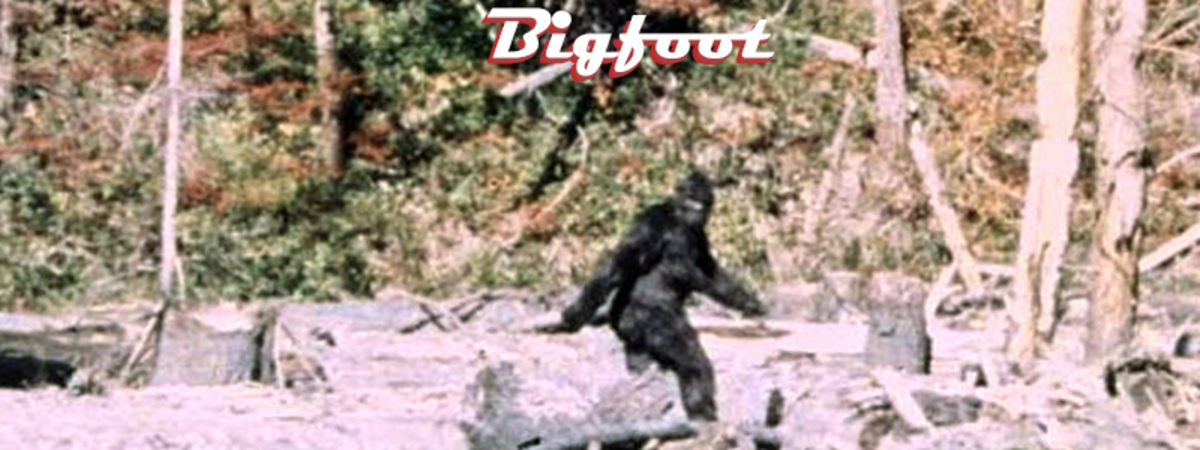The Astounding Truth of Self Organization out of Randomness
Things can be seen in random patterns and some have been given names
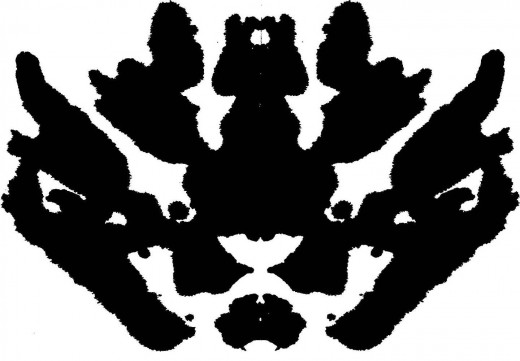
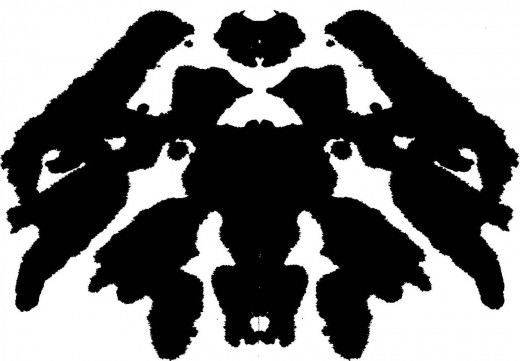
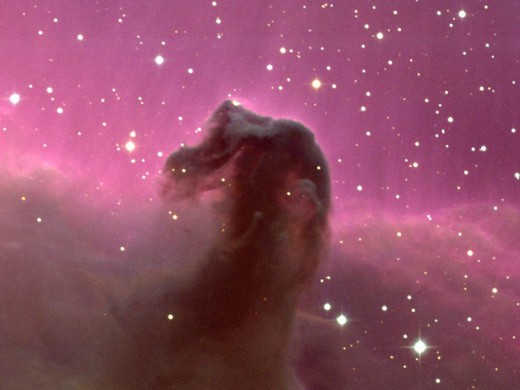
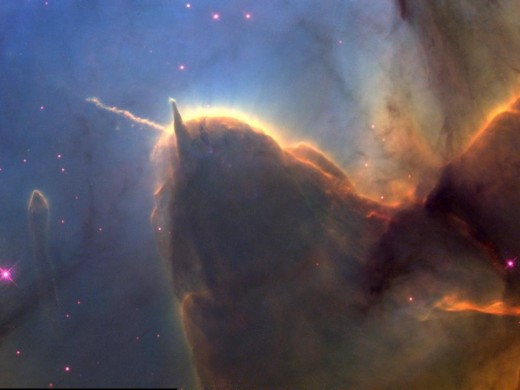
Recognizable Patterns Emerge Seemingly on their Own
Investigations into an entirely different field than cosmology have revealed an incredible truth. This field is one that lies on the boarder between abstract art and clinical psychology. It straddles the objective and subjective sides of the mind, the conscious and unconscious, rational and irrational. A fellow by the name of Rorschach found that simple random inkblots are a conscious gateway into unconscious perceptions. This insight proved such a powerful tool, that it has become secreted from the public domain, locked away in the ivory towers of academia. But, what he found, and others before him, can be rediscovered by anyone else who cares to make the effort and investigation. Indeed, his findings are by no means new at all. Humanity has used this and variants from before the dawn of recorded history. Such things were used in divining and portents.
It is astounding what differentiated two-dimensional randomly applied media can end up triggering in apparent representation. The randomly applied medium, such as what Jackson Pollack might do, is then subject to a force, which Mr. Pollack failed to pursue. The random sprinkles of ink are put under pressure and spread out wherever they can find escape. The result in every individual case is a unique pattern that is loaded with meaning to each individual who observes it. To the individual viewer, it is as if the random patterns self organize into recognizable entities of one type or another. What can be seen in each random spread, self-organizing out of chaos, is unique to whoever views it. Sometimes, unmistakable patterns emerge that many can see as one specific subject. Take the pattern shown here, generated from random ink sprinkles subjected to dynamic pressure. Without prejudicing your mind, you may see something entirely different that what is described. In one orientation, the unmistakable face of a tiger is clear. The very same pattern, turned upside down reveals an Arctic timber wolf. Keep in mind that these were not deliberately painted, but arose from the chaos of spreading ink under randomly applied pressure.
Others will see other things in parts of the pattern. Other random spreads will trigger a host of responses. Some will be fruitful, revealing much, others but little. The richness of the minds content and imagining also varies the outcome. No two patterns are identical; the field is rich with possibility. Further, people will see different things in each and every pattern, but more importantly many will see common subjects. The inkblot test is a variation on seeing patterns in clouds or using naturally occurring shapes as part of a work of sculpture, such as in cave paintings. Sometimes in the half-light of dawn or dusk, objects take on a different meaning when they trigger an image response from the unconscious. It is this that can trigger haunting in some cases. In the dark, light from unusual directions can turn inanimate objects into perceived threats. A pile of laundry in a corner can suddenly appear to be an intruder. A bush my look like a threatening animal of some kind, made all the more real if the wind is stirring it about. These perceived images could be very frightening to the beholder. The imaginative ability to perceive things in random patterns extends to groups of stars identified as constellations. Stars can seem like points in a connect the dots type patterning that reveals "spirits," meanings and portents. This is one of the basic essences of astrology. Used to its full, it is also one of the more powerful aspects of the art. In the dry regions of South America, where a decade can pass without a drop of rain, skies are unusually clear. Natives have a clear view of the galactic disk. Therein the see the dark clouds that make up potential star forming regions. To the natives, these same shapes take on significant meanings, and make up a significant part of their astrological belief and prophetic system. Each dark cloud region in the galaxy reminds them of one kind of animal, or another. These represent collectively, the closest parallel to the inkblot test. If at some time, you get an unparalleled clear view of the Milky Way, see what you can find in the dark patches embedded in that river of light. You will have your own intimate cosmogony. Astronomers have already done it with things like the horse head nebula shown in the photo gallery.
Much substance of this kind of thing has been made in the once popular Carlos Casteneda series on the Yaqui Indian way to knowledge/sorcery. In the several books like "Journey to Ixtlan", a sorcerer who goes by the name of Don Juan, is able to get the neophyte Carlos Casteneda to respond to the "spirit in things" by seeing their forms in everyday objects like rocks, shrubs, sticks and insects, in a subconscious response. Sometimes, these spirits are animated with a life of their own, giving important messages of power to the shaman. The whole experience is often enhanced by the shaman through the administering of natural drugs like the peyote button cactus, mescaline or even strong drink. Indeed, by the use of these and other methods, many cultures inspire vision quests for many reasons.
All over the world, shamans engage men and women in the vision quest or the rite of passage by a variety of means, often using trance-inducing techniques via natural potent drugs, chanting, fasting, sleep deprivation, sun dancing or other painful and trying circumstances. This is designed to strengthen the neophytes into full-fledged adulthood and the responsibilities of each individual in the tribe within the context of a potentially hostile world. One can thus postulate that the agony on the cross endured by those who were crucified, led to great enlightening visions. Among those were the likes of Jesus and Sparticus, both hung for sedition against the Roman empire. Shaman or warrior, the individual must be tried and made worthy of the calling. People must learn what perceptions are capable of doing. Inducing hallucination is important in these ceremonies. Unscrupulous shamans used naturally occurring tetrodotoxin to induce a state zombiism in the folks they wanted to involuntarily control. Those who are unaware of the hidden dangers of perception can be literally driven mad under the right combination of circumstances. The US military and once Soviet Union were, and are actively engaged in pursuing means to use this fact against unwary populations in the theater of war. To this end, the US is currently engaged in research into electronic mind manipulation and crowd control through the use of H.A.A.R.P. (High-frequency Active Aurora Resonance Program). In the past, drugs like LSD were experimented with. Target populations were used as unaware guinea pigs in experiments with LSD, radioactive injections, remote electronic manipulation and even the use of biological agents. Experiments went so far as to completely erase memories and personalities through shock treatment, massive drugging and other things, and then rebuilding artificial memories and personalities in their place. Such is the malleability of the mind. We encounter this to a lesser degree everyday in argument and discussion. The tendency also surface in popular movements like the Nazi movement in Whermacht Germany of the 1930's and 1940's.
The use of the inkblot can tell us much about suggestibility. The random distribution of ink can end up self-organizing into patterns that trigger responses of identity in people who see all manner of things as directed by the unconscious. It almost seems that this self-organization is not an accident in its uncanny ability to generate response. In the 4D cosmos, randomness also plays an important part in self-organizing of complex systems from stellar systems to complex life. Turbulent cosmic forces seeking balance between regions of difference drive this randomness. Werner Heisenberg once stated, "God plays dice." Einstein disagreed emphatically. "God" may indeed play the craps table, but the dice are loaded, so the outcome is predictable insofar as randomness will always elicit some kind of response! It seems there is a little truth both ways.
What occurs in two dimensions has a counterpart in the cosmic self-organization into complex forms within itself due to turbulence and due to the unequal distribution of energy-matter. In the dynamic cosmos, the gravity, light, electromagnetism and matter forces shape the process of self-organization. These are the counterparts of the pressure applied to ink drops on two-dimensional surfaces.
Since we live entirely in the cosmos and the cosmos is in us in an intimate symbiosis, we see things in turbulent patterns. It is not surprising that random patterns would induce such a response. What can be surprising and profound in meaning is that randomness, even in such a simple case, self organizes in a way to trigger such a response in us. Little wonder some folks would like to keep this simple, but powerful tool hidden. After all, knowledge is power, and the Yaqui shaman told Mr. Casteneda that "seeing", as he called it, was the way to power. In astrology, seeing the spirits in the stars was a way of power over the annual circuit of the sun and the monthly one of the moon. These portents had direct bearing on the timing of practical events in life, such as agriculture and fishing, giving humanity power over nature. A definite correlation was and is seen between star patterns, the transit of the sun, moon and planets, particularly Venus, through time, and particular natural events. In fact, it is these things that lead directly to the concept of time and timing until humanity developed the calendar and clock that allowed a "break from nature."
In a related area, is the objective versus the subjective; the so-called concrete reality versus our emotional response based on our perceptions. Scientists pride themselves on proof through objective facts. They refute and otherwise refuse to support the subjective claims about angels, God, and UFOs. But the observer/observed duality of the cosmos collapses at the quantum point where the very method of observation alters the observed in unpredictable ways. The act of observation changes the observed owing to sensitive dependence and what we see is not what we get, for the observed has since become something else. What we measure is the change of state, a derivative somewhere between two other states, the initial and final, of which we really know nothing. We are forced to map a probability distribution of possibilities and states. The two are one in a complex dance from moment to moment of the creation - destruction - creation cycle. So-called subjective feelings like ESP are instinctive reactions to events born at the observer - observed coupling at the quantum level. There is really no separation between objectivity and subjectivity. To suggest that the two can be separated, is akin to separating running software from the computer in order to see how software functions on its own without a computer! Objectivity and subjectivity are aspects of the same unity, like heads and tails on a single coin.
Objective proof is often limited by scalar bounds at upper and lower limits. In fact, beyond the limits, scientists themselves engage in a guessing game called the stochastic process. Subjective feelings allow us to grope into unknown territory beyond the objective limits. Insights to new understandings are founded not so often on rigorous or even statistical proofs but often by something akin to ESP or dreaming revelations, though prior proofs may fuel the insight that cannot be found through mechanically solving complex systems. Indeed, almost all complex equations are ultimately unsolvable for reasons discussed in other pages.
The unconscious and intuitive are intimately linked. These work within the context of our individual subjective view of the cosmos. There is little wonder then that what we see in things is colored by that subjectivity. We wonder what the mall centered person would see in star patterns without the conditioning of established prior myths. Some proof of this does exist where constellational star patterns in the southern hemisphere have been given such identities as the sextant, the telescope and artists easel. If someone who has no background in constellational myth were to look for patterns in the stars, what would they see? Would we find that a car or plane might show up? Maybe they would find a coffee perk or a washing machine. Some might find a dog or cat or even a MacDonald's Big Mac or the big yellow logo or a Pepsi bottle. Further proof of such responses come from nebulae, such as ones called the skull nebula and the Spirograph nebula. On close look, one does have the appearance of a skull. One thing stands out clearly in all of this, and this is the idea of the archetype, a great or essential prototype, as described by C. J. Jung in his writings. Much of what we are and experience has a relationship to some archetypal pattern or idea or other. It should be clear by now, just how much our subjectivity colors the personal worldview. If not, keep looking and be objective in your analysis. Experimentation is always encouraged!




